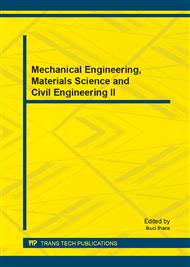p.400
p.404
p.408
p.412
p.416
p.420
p.425
p.429
p.433
Evaluating Manufacturing Processes with a Novel Approach of Making Fuzzy Judgement
Abstract:
To monitor manufacturing processes with the inevitable fuzzy (imprecise) information, several extensions of the traditional Shewhart-type control charts have been proposed over the past few years. Among them, fuzzy and s charts have been recently developed with certain categorization rules which can discriminate conditions of a manufacturing process into four consequences, including in-control, rather in-control, rather out-of-control and out-of-control. However, weakness of the fuzzy-number evaluation for the classification rules has been found. Thus, in this paper, an improved fuzzy-number ranking approach for the fuzzy charts is proposed to provide more sufficient and justified classification results for monitoring the online manufacturing processes.
Info:
Periodical:
Pages:
416-419
Citation:
Online since:
December 2013
Authors:
Price:
Сopyright:
© 2014 Trans Tech Publications Ltd. All Rights Reserved
Share:
Citation:


